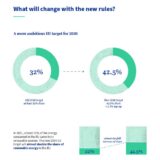
U.S. DOT finalises fuel economy standards for 2027-2031 models
The U.S. Department of Transportation’s National Highway Traffic Safety Administration (NHTSA) has announced new vehicle fuel economy standards for model years 2027-2031, projected to save Americans more than USD23 billion in fuel costs and significantly reduce pollution. These new regulations are part of ongoing efforts to enhance energy security that date back to the 1970s when vehicles averaged around 13 miles per gallon.
In July 2023, the NHTSA proposed new fuel economy regulations for personal vehicles and light trucks in the United States. The final rules are weaker than the draft rules, which proposed average fuel efficiency for light-duty vehicles to an impressive 58 miles per gallon (mpg) by model year, up from the 49 mpg required by 2026 under the current rules.
Key highlights of the new standards
- Passenger Cars: Fuel economy will increase by 2% annually from model years 2027 to 2031, bringing the average fuel efficiency to approximately 50.4 miles per gallon by model year 2031. This is expected to save car owners more than USD600 in fuel costs over the lifetime of their vehicles.
- Light Trucks: For model years 2029 to 2031, fuel economy will also increase by 2% annually.
- Heavy-Duty Pickup Trucks and Vans: Fuel efficiency will increase by 10% annually for model years 2030 to 2032 and by 8% annually for model years 2033 to 2035, achieving a fleet-wide average of around 35 miles per gallon by model year 2035 and saving owners more than USD700 in fuel costs. Environmental and economic impact
These new standards will save nearly 70 billion gallons of gasoline through 2050, preventing more than 710 million metric tons of carbon dioxide emissions. This reduction in fuel consumption and emissions aligns with the Biden Administration’s climate goals and supports American energy independence.
U.S. Transportation Secretary Pete Buttigieg emphasised the benefits: “Not only will these new standards save Americans money at the pump every time they fill up, they will also decrease harmful pollution and make America less reliant on foreign oil,” U.S. Transportation Secretary Pete Buttigieg said. “These standards will save car owners more than USD600 in gasoline costs over the lifetime of their vehicle.”
U.S. President Joseph Biden’s National Climate Advisor, Ali Zaidi, highlighted the broader impact: “These fuel economy standards, rigorously aligned with our investments and standards across the federal government, deliver on the Biden-Harris Administration’s promise to build on this momentum and continue to spur job creation, and move faster and faster to tackle the climate crisis.”
NHTSA Deputy Administrator Sophie Shulman noted the historical progress: “When Congress established the Corporate Average Fuel Economy program in the 1970s, the average vehicle got about 13 miles to the gallon. Under these new standards, the average light-duty vehicle will achieve nearly four times that at 50 miles per gallon. These new fuel economy standards will save our nation billions of dollars, help reduce our dependence on fossil fuels, and make our air cleaner for everyone. Americans will enjoy the benefits of this rule for decades to come.”
Collaboration and flexibility
The NHTSA engaged with various stakeholders, including consumers, unions, automakers, states, and environmental advocates, to develop these standards. The new regulations complement the Environmental Protection Agency’s emissions standards for similar vehicle fleets. The NHTSA and EPA worked closely to maximise the effectiveness of these standards while minimising compliance costs.
The new fuel economy standards provide flexibility for manufacturers, allowing them to use all available technologies, including advanced internal combustion engines, hybrid technologies, and electric vehicles, to meet the targets.














